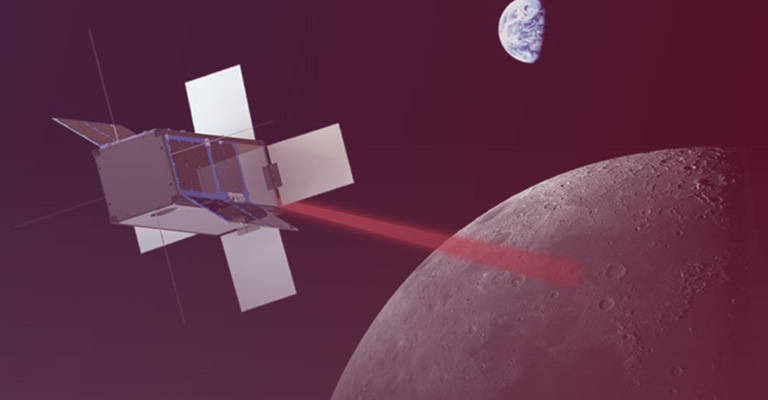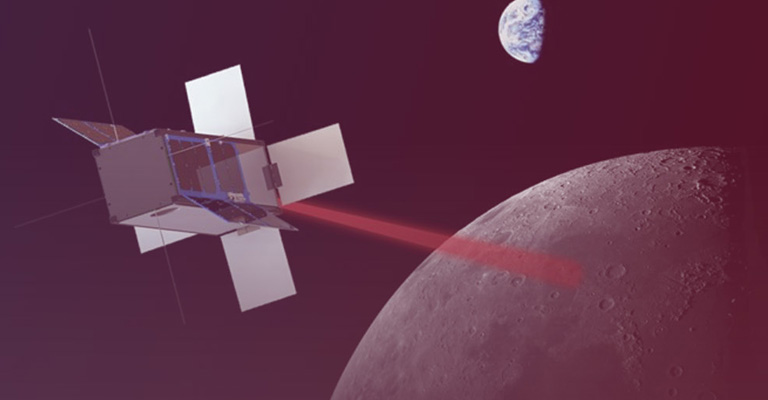About
How can we create opportunities for young generations to directly interact with a satellite?
LightCube is a 1U CubeSat developed through a collaboration between Arizona State University’s Interplanetary Initiative, Vega Space Systems and CETYS Universidad. This student-driven project has two main objectives:
- To provide a tangible way for individuals to interact with a satellite in space.
- To inspire and educate future generations about space technology.
How it works
- User interaction: Anyone with a HAM radio license can send a signal to activate the satellite’s xenon flash system.
- Visual feedback: When activated, the satellite produces a brief flash of light visible from Earth.
- Environmental considerations: The flashes are rate-limited and brief to minimize light pollution and protect astronomical observations.
Educational benefits
LightCube serves as a hands-on learning tool for various STEM disciplines:
- Radio communication.
- Satellite operations.
- Space technology.
By allowing direct interaction with a satellite, the project aims to inspire students and enthusiasts to see themselves as potential contributors to space exploration.
Environmental responsibility
The satellite is designed with sustainability in mind:
- It will safely deorbit within a few years.
- No space debris will be left behind.
Through this project, LightCube demonstrates how space technology can be made more accessible and engaging for the general public while maintaining environmental responsibility.
Status
Past
Category
Technology development and demonstration | Media and public outreach
Environment
Earth | LEO, MEO, GEO
Contact
Key accomplishments
- Developed and implemented mission-specific software engineering solutions for the Interplanetary Lab project.
- Achieved integration of multiple subsystems, ensuring operational cohesion throughout the mission lifecycle.
- Executed comprehensive testing protocols to verify system performance and reliability across all mission components.
- Provided specialized engineering support for the gravity gradient subsystem, critical for satellite attitude control.
- Contributed to payload system development, aligning with mission requirements and performance criteria.
- Offered technical expertise in the design and implementation of the communications subsystem, optimizing data transmission and reception.
- Served as the primary manufacturing facility for LightCube, implementing efficient production processes.
News

Arizona State University wins bid to send a small satellite into space
May 25, 2021 | Steve Nielsen
ASU secures bid to launch a small satellite, enabling public interaction via amateur radio signals.

LightCube: Inspiring students through satellite interactions
November 30, 2023 | Shireen Dooling
ASU’s LightCube mission inspires students by letting them build, launch, and interact with a satellite in orbit.

Lightcube was an interesting mission because its main mission was centered around outreach. The spacecraft had a xenon flash tube, which could be triggered by remote control. Anyone with a HAM radio license would be able to ping the satellite and see a flash response in space! The purpose was to educate students, teachers and community members about radio communication, satellite operations, and overall interest in CubeSats. Additionally, the satellite was designed and built by students at Arizona State University and CETYS Universidad! The spacecraft was successfully deployed and turned on. Data was collected from several ground stations around the world and we achieved our primary mission of outreach.
Although we never saw LightCube flash from space, I would still consider the mission a great success. The lab gained valuable knowledge about particular practices when it comes to developing and delivering a CubeSat (e.g., having more than one person working on the satellite, how to stake wires), how to better manage time and schedule, and about local businesses that we could go to for manufacturing — all things that would help future lab CubeSats be more successful. Additionally, we managed to verify that multiple components, such as the solar panels and the antenna, are now flight proven designs, which were all components that were built in-house and had never gone to space before!
Team
Jaime Sanchez de la Vega, principal investigator
Danny Jacobs, Producer – original concept
Michael Goryll, Payload Producer – co-investigator
Kyle DeSousa, payload lead — co-investigator
Raymond Barakat, power lead
David Allee, faculty advisor
Austin Chau
Kevin Trieu
Zion McAndrews
Chase Allen
Nersa Elya
Matthew Morton
Ali Alzarer
Trevor Kortman
Logan Bennett
Samantha Estock
Seth Haber
Vincent Espinoza
Logan Seaburg
William Esquibel
Tyrone Richardson
Nikhileswar Yarlagadda
Jonathan Cuellar
Pawan Vijayanagar
Andrea Shoonover
Melanie Shoonover
Caden Lackey
CETYS Universidad
Fernanda Lopez, team lead
Francisco Durazo, electrical engineer
Michelle Quevedo, electrical engineer
Eva Real, software engineer
Roberto Gonzalez, software engineer
Axel Martinez, mechanical engineer
Karen Esquivel, mechanical engineer
Veronica Rojas, faculty advisor
Yamel Ungson, faculty advisor
Juan Barroso, faculty advisor
Explore more projects
Learn about our research programs dedicated to creating a future in space that prioritizes people and environments. Collaborate with experts and students to explore groundbreaking ideas and solutions that drive positive change.